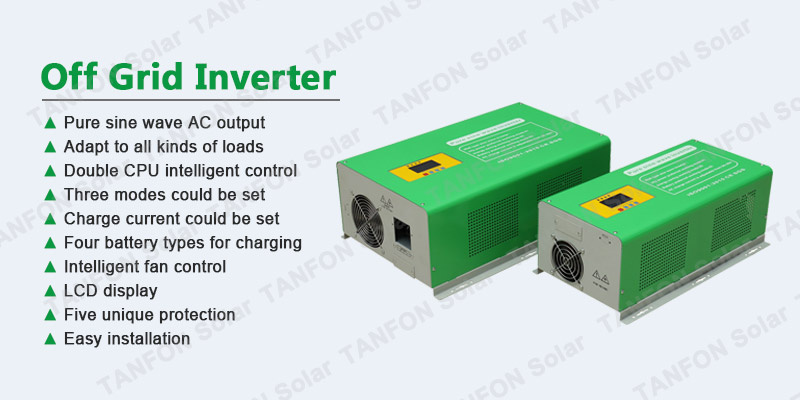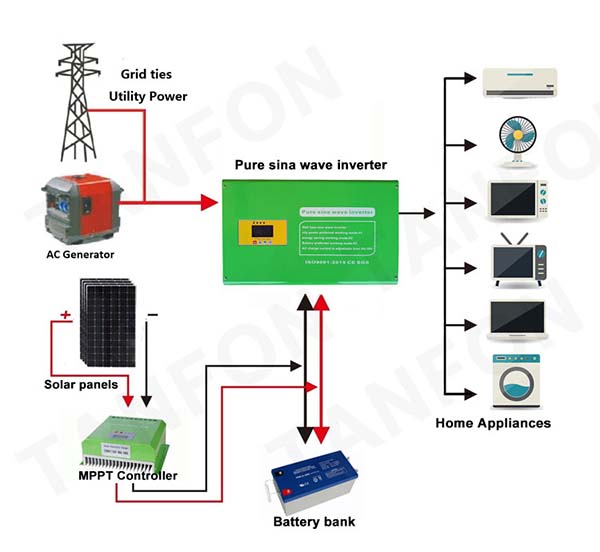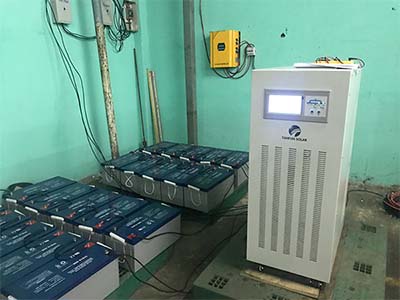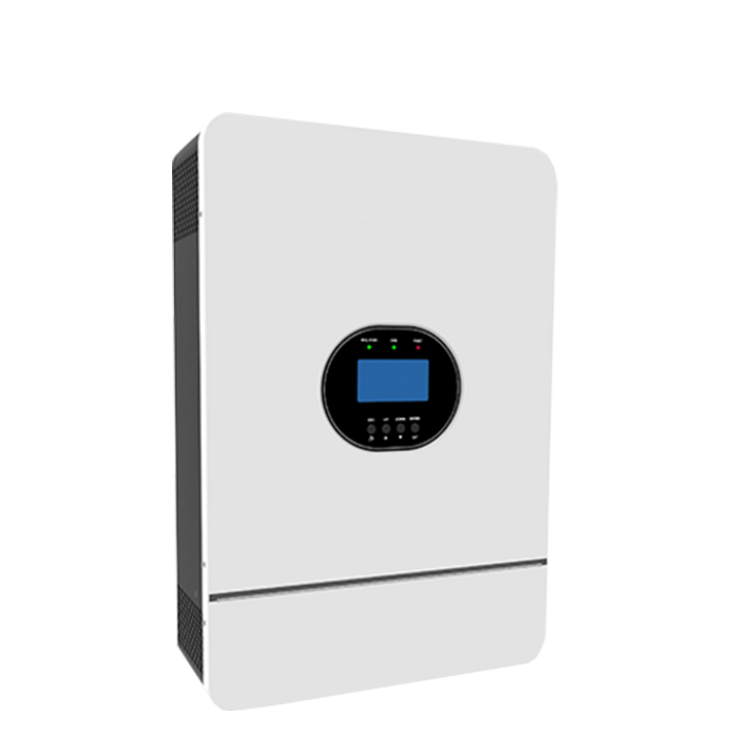 TANFON SOLAR
TANFON SOLAR
 December 02,2019
December 02,2019
The output of the pure sine wave inverter corrected by the inverter is the sum of two square waves, one of which shifts 90 degrees with respect to the other.The result is a three-level waveform with zero voltage equal intervals; Peak positive voltage, zero volts; Peak negative voltage, zero volts.The sequence repeats.The resulting waveform is very similar to the shape of a sine wave. Most cheap consumer power inverters produce corrected sine waves instead of pure ones.

The waveforms in the commercially available modified pure sine wave inverters are similar to square waves, but are suspended during polarity inversion. Switching states for positive, negative and zero voltage development. In general, the RMS ratio of peak voltage to voltage cannot maintain the same relationship with sine wave. The DC bus voltage can be adjusted actively, or the "on" and "off" times can be modified to maintain the same RMS output of the DC bus voltage to compensate for the DC bus voltage changes.

With a technique called pulse width modulation (PWM), the ratio of switching time can be adjusted to change the RMS voltage while maintaining a constant frequency. The resulting gate pulse gives each switch the desired output based on the mode of development. The harmonic spectrum in the output depends on the pulse width and modulation frequency. Voltage harmonics are usually not important when operating an asynchronous motor. However, harmonic distortion in the current waveform causes additional heating and may produce pulsating torque.

On modified pure sine wave power inverter devices, especially those with resistive loads, such as traditional incandescent bulbs, many electrical devices will work well. Items with switching power supply are almost perfectly fine, but if the item has a power transformer, it may overheat, depending on its rating.












